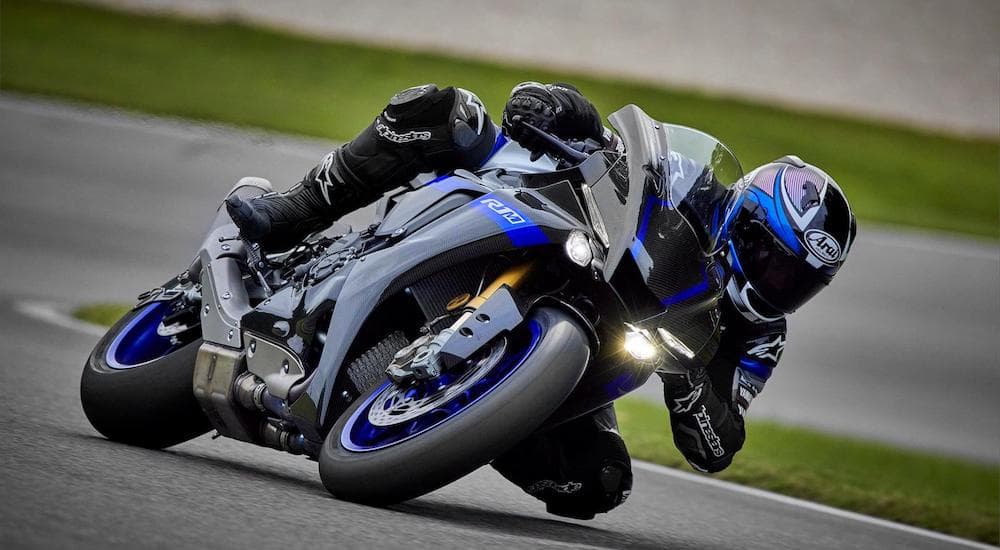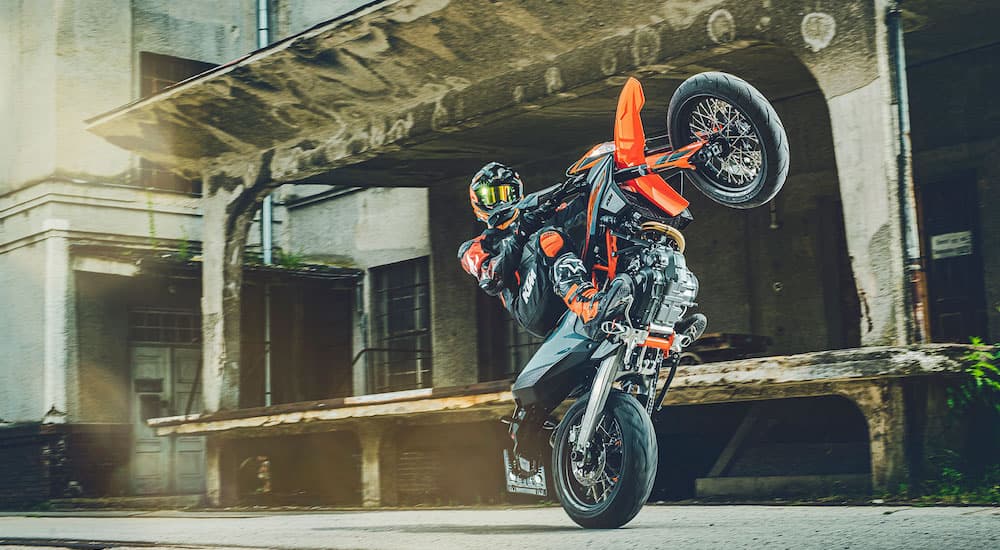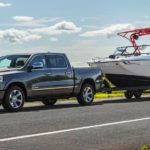Marrying into a family of avid motorcyclists was slightly intimidating but never dull. For me, it’s been less like a scene from Sons of Anarchy, thank goodness, and more like an open ticket for adventure. There’s far less leather but plenty of tattoos and even more crazy stories. It was the perfect recipe for an adrenaline junkie looking for a new experience and the opportunity to create a few adventures and stories of her own.
Shopping for a motorcycle is no easy feat. There are dozens of options that meet various riding styles and needs; in other words, not every bike is the same, which works to your advantage. The different motorcycle styles give you more options for adventure within your riding abilities and your physical height and size. For example, the BMW Roadster my 80-year-old father-in-law rides doesn’t satisfy my husband’s penchant for off-road adventures, nor does it comfortably fit his long legs. Instead, he rides a BMW GS, which might be from the same manufacturer but is about as different as a Ford Mustang is from a Ford Bronco. They both handle well on the pavement, but one is destined for a little more adventure when the asphalt ends.
Shopping for a motorcycle can be a bit overwhelming with so many options. Take it from someone who’s been there, done that, and has the t-shirt. As with any investment, knowledge is power, and that’s the inspiration for this deep dive into the different types of motorcycles and how they serve riders; leather riding gear and tattoos not required.
Standard
Your everyday, run-of-the-mill bike is the standard motorcycle, one of the most common bikes on the road today. They are easily recognizable by their upright riding position and simple design sans fairings or bags. Essentially, they’re a “naked” bike and are about as simple as it gets. But in this case, simplicity isn’t a disadvantage and makes the standard bike an excellent option for riders of all skill levels.
The standard motorcycle features a flat seat that puts the rider in a natural position atop the bike. The handlebars allow the rider’s hands to rest comfortably, and the footpegs put the rider’s legs directly underneath them or slightly forward. This universally accessible riding position benefits new riders, giving the beginner a sense of control and stability.
Another unique feature of this classification of bikes is their wide range of power and capability. For example, you can find an entry-level 125-cc model or a 1,000-cc powerhouse ideal for a veteran rider. Some of the most popular models in the class are the Triumph Street Twin, Suzuki SV650, Yamaha SR400, BMW R nineT, and the Honda CB650R.
Cruiser
Cruisers are perhaps the most easily understood motorcycle because their purpose is precisely what their name implies. They’re meant for cruising comfortably and are often inseparable from the Harley-Davidson name, thanks to models like the Low Rider. So, what sets these cruising bikes apart from the others?
Because cruisers are designed for comfort, they have a distinct look and feel, making them better suited for on-road driving and higher top speeds. For example, their lower seat height gives you the sense that you’re sitting in a cruiser rather than on it. In addition, the foot pegs are generally in a semi-forward position, with some models offering a more relaxed riding style that moves the foot pegs forward to put the rider in a stretched-out stance. You can also find cruisers with traditional or high handlebars.
Like standard bikes, cruisers offer a range of power that can satisfy different riding needs and skill levels. They are also easily outfitted with accessories like luggage or saddlebags that add to their versatility, making them great for weekend adventures on the road. Beyond Harley-Davidson’s Low Rider, some of the most popular cruisers include the Honda Rebel, Indian Scout, and the Suzuki Boulevard.
Sport Bike
Blending performance and speed, sport bikes can satiate a rider’s need for high-speed adventures on the pavement. While cruisers and touring bikes are typically heavier, sport bikes are lightweight by design. By exchanging a heavy frame with lightweight aluminum materials, the sport bike is agile and easier to maneuver at any speed.
To help with this high-speed performance, sport bikes also give the rider a higher seating position so they can lean into the motorcycle. This position makes cornering the bike almost effortless, with highly skilled riders often seen dragging a knee in the corner with their aggressive lean. Moto GP and brands like Suzuki come to mind when most people think of sport bikes.
As far as power, sport bikes are like every other classification of motorcycle and offer a range of capabilities. New riders can find a great entry-level bike like the Honda CBR250R, and the Yamaha YZF-R3 has earned high praise across the industry with its 300-cc engine. On the opposite end of the spectrum, more advanced riders will find plenty of speed with models like the Suzuki GSX-R750 or the GSX-R1000.
Adventure
Adventure bikes are aptly named because they offer an endless array of adventures. How so? They’re as at home on the pavement as they are on the trail, making it easy to say “yes” to any and every adventure when you’re in the saddle.
Adventure bikes, known collectively as “ADV” motorcycles, position the rider in a high seating position with taller handlebars that ensure a comfortable riding position. In addition, the foot pegs are arranged so you can stand up in the saddle when you need greater control for navigating more technical terrain. Even then, the bike’s performance or ride quality isn’t heavily impacted, thanks to its long-travel suspension.
Models like the Honda Africa Twin, Harley-Davidson Pan America 1250, and BMW G 650 GS are great examples of adventure bikes. These models are well-balanced, easy to ride, and incredibly versatile. With a wide range of power, you can find the perfect adventurer to meet your needs and outfit it with various accessories like heated grips, a GPS, and a radio to add cruiser and touring-style comforts to your two-wheeled adventurer.
Enduro
While an adventure bike can go the distance on and off the road, an enduro bike isn’t made for long-distance traveling, at least not on the pavement. Also known as a dual-sport, this is about as close as you can get to a street-legal dirt bike. In other words, it’s meant to get a little mud on the tires and doesn’t feel quite at home on the highway. In fact, its modest engine, lightweight design, and the absence of fairings and a windshield make it a real pain to navigate at highway speeds.
So, what makes an enduro bike popular? Enduro bikes are staples in the off-road and dirt bike realms. Their rugged design and knobby tires make them ideal for challenging terrain, allowing them to take a beating as riders navigate ascents, descents, obstacles, and more. Along with this, they also allow riders to stand on the pegs for extended periods, giving the rider more control over the bike when traveling across technical terrain.
Since enduro bikes aren’t destined for the pavement, you’ll find them used in cross-country competitions, trail rides, off-roading, and rally races. They’re often trailered from one venue to another, delivering plenty of fun in the dirt with their rugged builds. Some of the most popular models in the segment include the Honda CRF450RL, KTM 500 EXC-F, and the Husqvarna FE350s.
Supermoto
Supermoto bikes are unique because they take the best features of a dual-sport or adventure motorcycle and blend them with everything riders love about a dirt bike. The result is a street-legal dirt bike that handles incredibly well on the pavement. This capability makes Supermoto bikes popular among riders looking for dirt bike handling on the street. So, what else makes them unique?
Supermoto bikes feature a long-travel suspension, cradle-frame chassis, and a 16.5-inch or 17-inch street tire in front. They’re lightweight, nimble, wheelie-popping capable, and are often equipped with oversized brake rotors designed for hard braking on the pavement. When it comes to power, most Supermoto bikes fall around the 450-cc mark, but some brands like Ducati push those limits with models like the Hypermotard 950 and 950 SP. Other popular options include the KTM 690 SMC R and 990 SM R, Husqvarna SM610, and Yamaha WR125X.
What Will You Ride?
Years ago, if you asked me about a motorcycle, I’d tell you it’s nothing more than a bike with an engine. Back then, my knowledge was also severely limited to shows like Sons of Anarchy, which portrayed bikers as a sweaty group of cutthroat anarchists with a penchant for leather, booze, and women. Fast forward to the present day, and my perspective has entirely changed, and that has a lot to do with understanding the different types of motorcycles and their purposes.
Whatever style of bike you choose, it’s critical to find one that physically fits you and suits your needs. It needs to be powerful enough to give you confidence but not too powerful to overwhelm you or get you into trouble. Just as riding is a balance between you and gravity, finding the perfect bike is a balance of your physical and riding demands. Achieving that balance is genuinely worthwhile, giving you the freedom to explore the open road and introducing you into a new realm of adventure where tattoos, leather, and biker rallies are welcome but not required.






